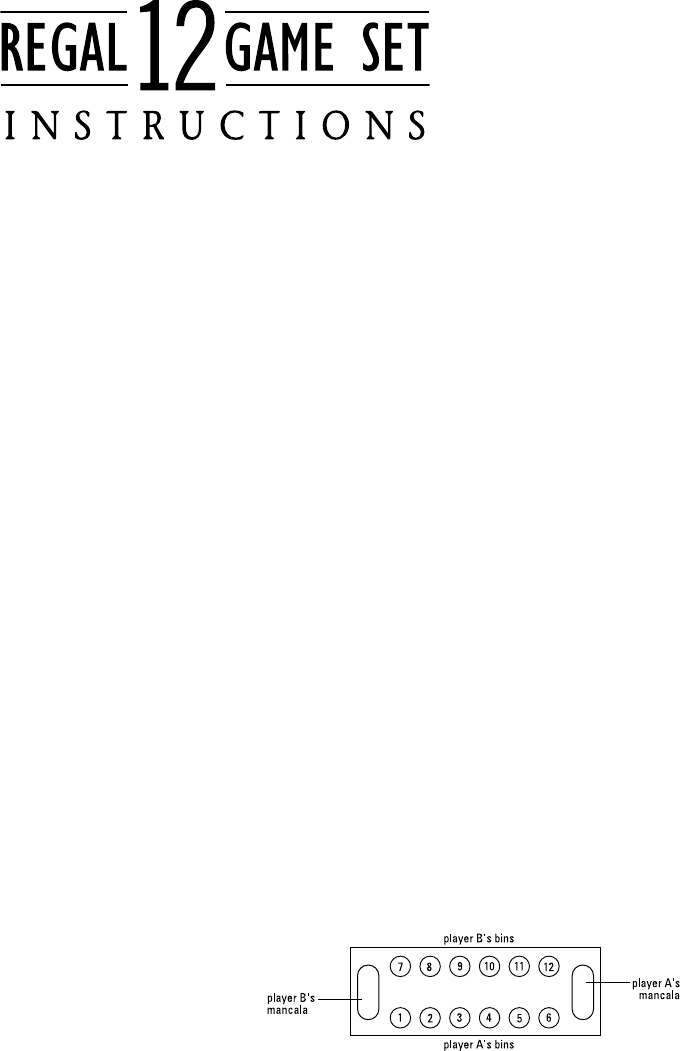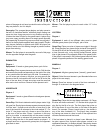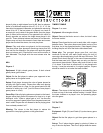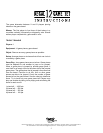
2
3
colors of the pegs do not have to match the color of the point
they are placed in, but it is helpful.
Game play: The youngest player begins, and play moves to
the left in a clockwise rotation, with each player making one
move at a time. A peg may move in any direction as long as
it follows the lines of holes on the game board. A player may
jump over a peg, providing there is an empty space opposite
the jumped peg. A player may jump more than one peg only if
there is an empty space opposite each peg jumped. Players
may play as partners or against each other. No player can
refuse to move out of his starting triangle to prevent another
player from winning.
Winner: The rst player to successfully move all of his pegs
into the opposite triangle wins the game.
ELIMINATION
Players: 1
Equipment: 10 wood or glass game pieces, pair of dice
Game Play: Place a game piece on each circle. Roll the dice
and remove the pieces corresponding to the total of the dice
or any combination that adds up to the total. For example, if
you roll a two and a three on the dice, you may remove the
pieces on the #2 circle and the #3 circle or the #5 circle (the
sum of the two dice). At least one piece must be removed
after each role to continue. Remove all the pieces to win!
HORSE RACE
Players: 2
Equipment: 2 wood or glass different colored game pieces,
pair of dice
Game Play: Roll dice to determine which player starts. High
roll goes rst. Each player chooses a game piece and places
it on the “start.” A player must roll a two on one die or in the
sum of the two dice to advance to the circle marked “2”. For
circle “3”, the player must roll a three on one of the dice or
in the sum of the two dice. Player 1 continues in this way
until he is unable to consecutively roll the correct number.
Player 2 then tries to advance his game piece around the
track by rolling the dice in the same manner as player 1. If
a player lands on an opponent’s game piece, the opponent
goes back to start.
Winner: The rst player’s piece to reach circle “12” is the
winner.
HYSTERIA
Players: 1
Equipment: 4 each of two different color wood or glass
different game pieces (total of eight), pair of dice
Game Play: Place one color of pieces on circles #1 through
#4. Place the other four pieces on the circles #7 through #10.
Circles #5 & #6 will be left empty. By jumping pieces, one at
a time (forward only), or by moving pieces forward, player
tries to get pieces to the opposite ends of the game board.
If the player is successful, the nished game board will have
pieces in opposite positions of the starting game board.
MANCALA
Players: 2
Equipment: 48 glass game pieces (“stones”), game board
Object: Collect the most stones in your Mancala before one
player’s bins are empty.
Set-up: Place four stones in each of the bins numbered 1
through 12 as shown in the diagram below.
Game Play: Player A’s bins are those numbered 1-6. Player
B’s bins are those numbered 7-12. Decide which player will
play rst by the ip of a coin. The rst player then picks up
all of the stones in one of the bins on his side of the game
board. For example, Player A would pick-up the stones in
any of the bins numbered 1-6. The player then proceeds
by placing one stone at a time in each of the adjacent bins
counter-clockwise around the board.
If the last stone is placed in a player’s own Mancala, then
he gets a second turn. A player never places a stone in an
opponents Mancala, it is always skipped. Remaining stones
are placed in the following adjacent bins. For example,







